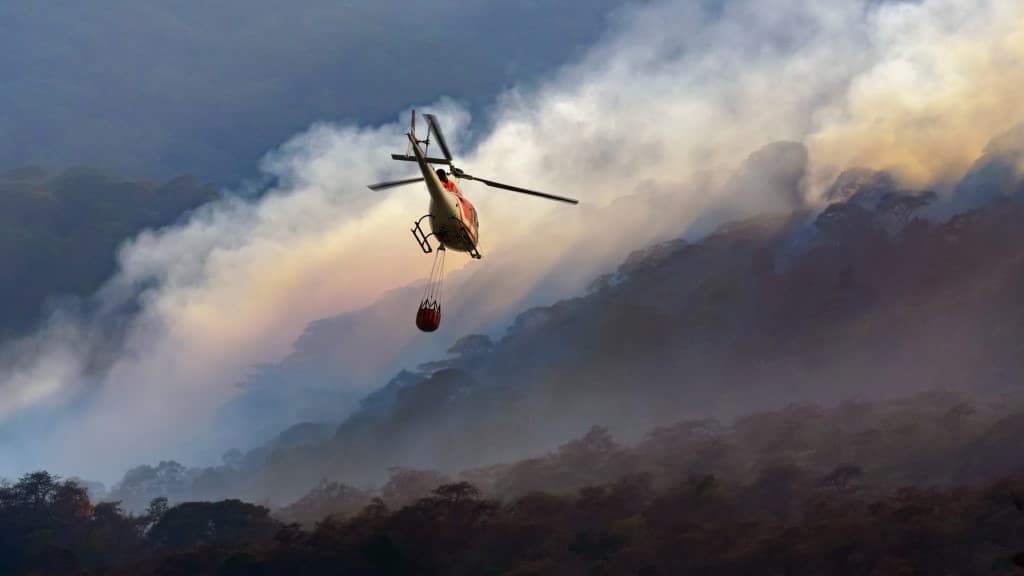The sky is the limit: IFSJ speaks to the United Aerial Firefighters Association
- April 28, 2023
- 8:30 am


Iain Hoey
Share this content
John Gould, CEO and President of 10 Tanker, gives the lowdown on the newly established United Aerial Firefighters Association (UAFA)
Tell me about yourself and your background in the fire industry?
I’ve been in aerial fire my entire adult life. I was in my teens when I was in my first Helitack crew. Five years after that I started smoke jumping with the Alaska Smoke Jumpers. In that capacity I got qualifications as an air tactical group supervisor.
Then I went into fire programme management with the Department of the Interior and worked for the National Interagency Fire Center for a number of years. In my last stint, I was the Director of Aviation for the Bureau of Land Management. Somewhere along the line I had met the people from 10 Tanker Air Carrier and they asked if I’d be interested in coming and working for them when I retired – and that’s what I did.
Six years ago I become CEO and President of 10 Tanker. I’ve been able to take all that fire and management experience I was fortunate enough to get working for the Federal Government in wildland fire and applied it here.
How was the United Aerial Firefighters Association (UAFA) formed?
The UAFA started as group of contractors working in the aerial firefighting industry who recognised that we all had the same needs and experience. We would go up the hill and talk about funding and talk about the future of the industry. We would always hear ‘that’s great, I know what your company thinks, but what does the industry think? What do the rest of you competitors think?’
We started talking about what we could do to solve that problem and become a voice for the industry – that’s what we’ve done. It is not just talking to congress, it is also talking to our customers, being able to speak to potential customers in other parts of the world – this business is expanding so quickly that I think a voice that is a voice of authority and experience is very helpful. That’s what started it and that’s how we got here.
Who is involved with the Association?
Every member on the board of directors was in on the initial discussions. We had a meeting around a year ago in San Diego where 10 people got together from around the industry. All the people in the board of directors was involved from the beginning.
We decided that there was an issue and we moved forward. We’ve had a series of meetings and lots of work between then and now to get to where we are today. I think it would be fair to say that everybody who is on the Board of Directors was equally involved in putting this together and making it work.
[Members include Gould, Vice President: Bart Brainerd from Firehawk Helicopters, Secretary/Treasurer Brett L’Esperance from Dauntless Air, Director Tim Sheehy from Bridger Aerospace, and Director Jennifer Draughon from Neptune Aviation ServicesWhat would you say are the biggest issues and future challenges in aerial firefighting at the moment?
I think that here in North America there are a few things such as what is happening with wildfire today: how many people are impacted, how much wildfire is burning, how it impacts the air that we breath and the places that we live. We think that the structure of the industry is a relic of the 1960s when we didn’t have that big of a problem. Back then it was just a nuisance that came up in the summer, but those times have changes. We think there should be adequate funding to enable the agencies the fight these fire to have the resources they need to make it work.
Funding is an issue. We can talk to our legislators and say “This is a problem that’s grown exponentially and funding has stayed flat”. We see contracts being pushed down to the lowest priced technically acceptable aircraft. There are those of us in UAFA that invest tens of millions of dollars in our airplanes. We think there’s an advantage that the customer gets from safety and operational capability – it’s not always about lowest price acceptable. There’s room to make the contracting process better.
There’s also being able to provide expertise throughout the industry: we’ve been working in these siloes for so long that people oftentimes don’t know where to go and get the real answer they need be it for advice on tank size, operations helicopters or drone operations. We have expertise to offer. We believe that we are a repository for a lot of great fire expertise that has developed over the last 50 years. Our contractors have all been there. They understand fire.
Finally, I think that as a group we can respond to issues as they develop instead of let them meander around for a while and let them develop into bigger problems. These are some of the main things I think we can accomplish as we start. We are in our infancy right now, but we see the potential, we are just getting our feet on the ground and we hope that as we grow we will become a useful tool for the industry.



